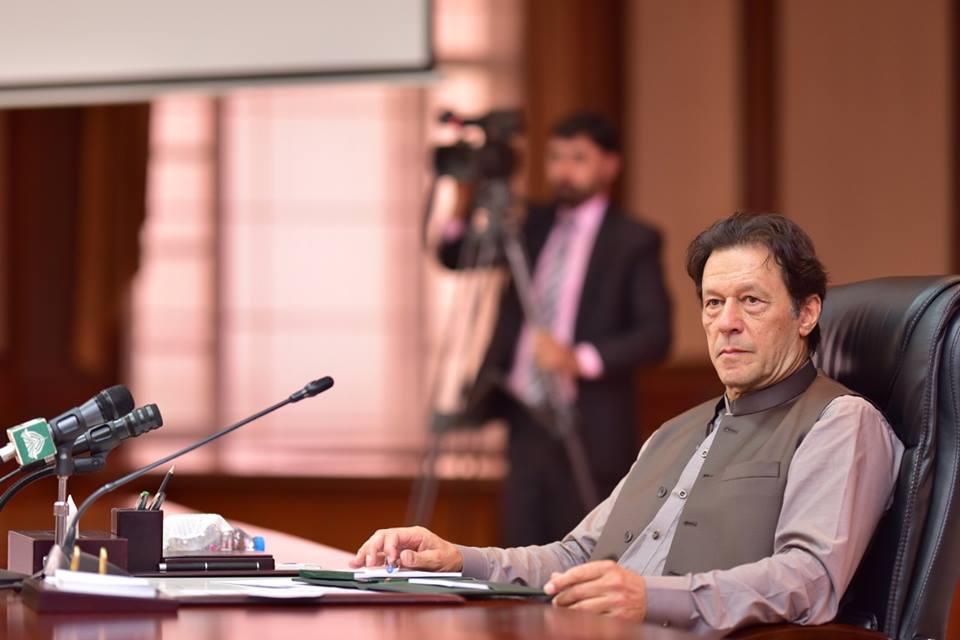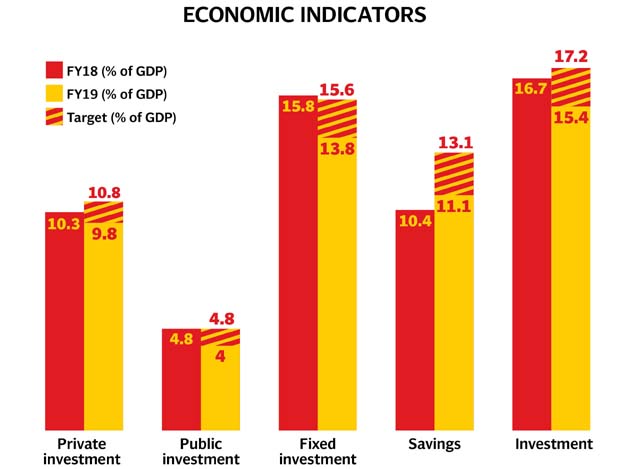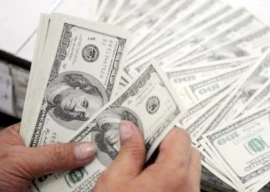
In terms of size of the national economy, the investment ratio stood at 15.4% in the current fiscal year, which was even lower than last fiscal year’s level and also the lowest level in three years. The Pakistan Tehreek-e-Insaf (PTI) government missed the investment-to-Gross Domestic Product annual target of 17.2%.
Both the public and private investment went down in the first year of the PTI government, suggesting that private investors were not showing their trust in the government.
The savings-to-GDP ratio target was also missed that remained at 11.1% of GDP. But the silver lining was that the savings were slightly better than the previous fiscal year due to relatively low current account deficit projected for the current fiscal year. The gap between total investments and savings is financed through foreign savings. The results are based on the working of the National Accounts Committee (NAC) that approved the provisional economic growth rate of 3.3% for the fiscal year 2018-19, ending on June 30. The PTI government has now missed the annual targets of economic growth, national savings, and investment.
Failure to achieve these crucial targets has limited the government’s ability to spend on deteriorating infrastructure and social sectors from its own resources. This has inevitably increased the government’s reliance on external and domestic sources to meet its requirements, resulting in mushroom growth in public debt in the past five years. The provisional estimates suggest that the per capita income shrank by 8.2% to $1,516. It was lower by $136 when compared with the revised per capita income estimates of $1,652 for the last fiscal year.
The per capita income is worked out by dividing the total national income with the number of people. Last time, in the fiscal year 2015-16, the per capita income had been recorded at $1,529.

The total size of the national economy is now estimated at $291 billion for this fiscal year - down from $315 billion a year ago. The size of the national economy in US dollar terms has also shrunk by nearly 8%. In rupee terms, the per capita income stood at Rs200,693 - up by 14%. The investment-to-GDP ratio stood at just 15.4% against a target of 17.2%, said the sources. The ratio was worse than last year's revised rate of 16.7%, they added. The government’s inability to increase investment as a percentage of the total size of the national economy remains its biggest failure on the economic front, suggesting that the PTI government has not yet begun its journey towards addressing structural imbalances.
The private investment that had been recorded at 10.3% of GDP in the last year has also slipped to 9.8%, according to the Pakistan Bureau of Statistics (PBS) working. The government had a target to increase private investment to 10.8%. The public investment also shrank to 4% of GDP - down from 4.8%, due to steep cut in development spending by the federal and provincial governments. Fixed investment remained at only 13.8% of GDP in the fiscal year 2018-19 against the target of 15.6%. It was down by 2% from last year’s level.
Savings increased to 11.1% of GDP - far below the target of 13.1%. In the last fiscal year, savings were recorded at 10.4% of GDP.
Due to low savings and investment ratios, Pakistan’s current account deficit is now projected to widen to 4.3% of GDP - better than last year’s level of 6.3%. These figures of investment and savings would be officially published in the Economic Survey of Pakistan 2018-19, likely to be unveiled on June 10.
Pakistan has one of the lowest investment and saving rates in the region and the world, obstructing progress towards a sustainable inclusive economic growth path.
Published in The Express Tribune, May 12th, 2019.
Like Business on Facebook, follow @TribuneBiz on Twitter to stay informed and join in the conversation.

















COMMENTS (3)
Comments are moderated and generally will be posted if they are on-topic and not abusive.
For more information, please see our Comments FAQ